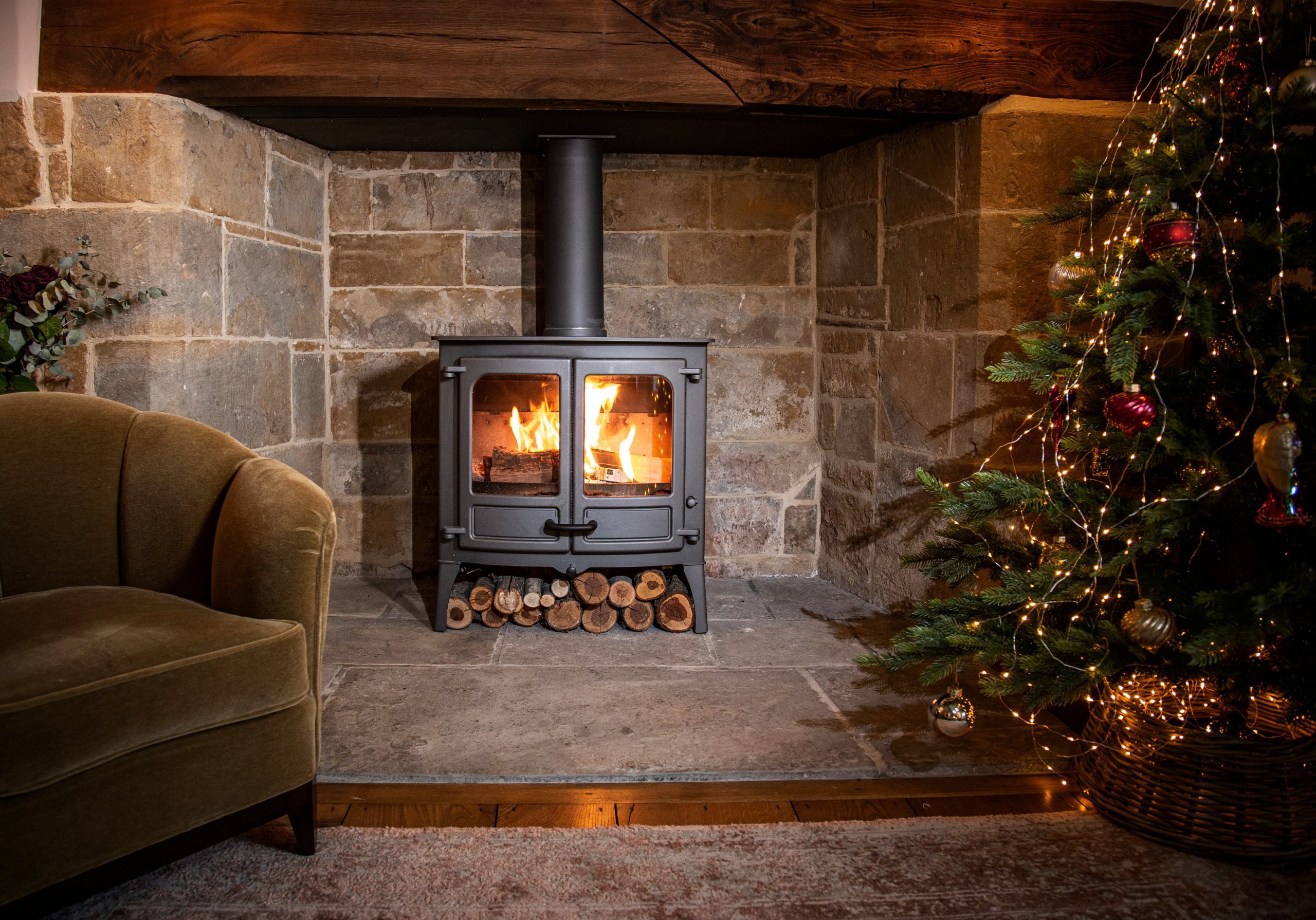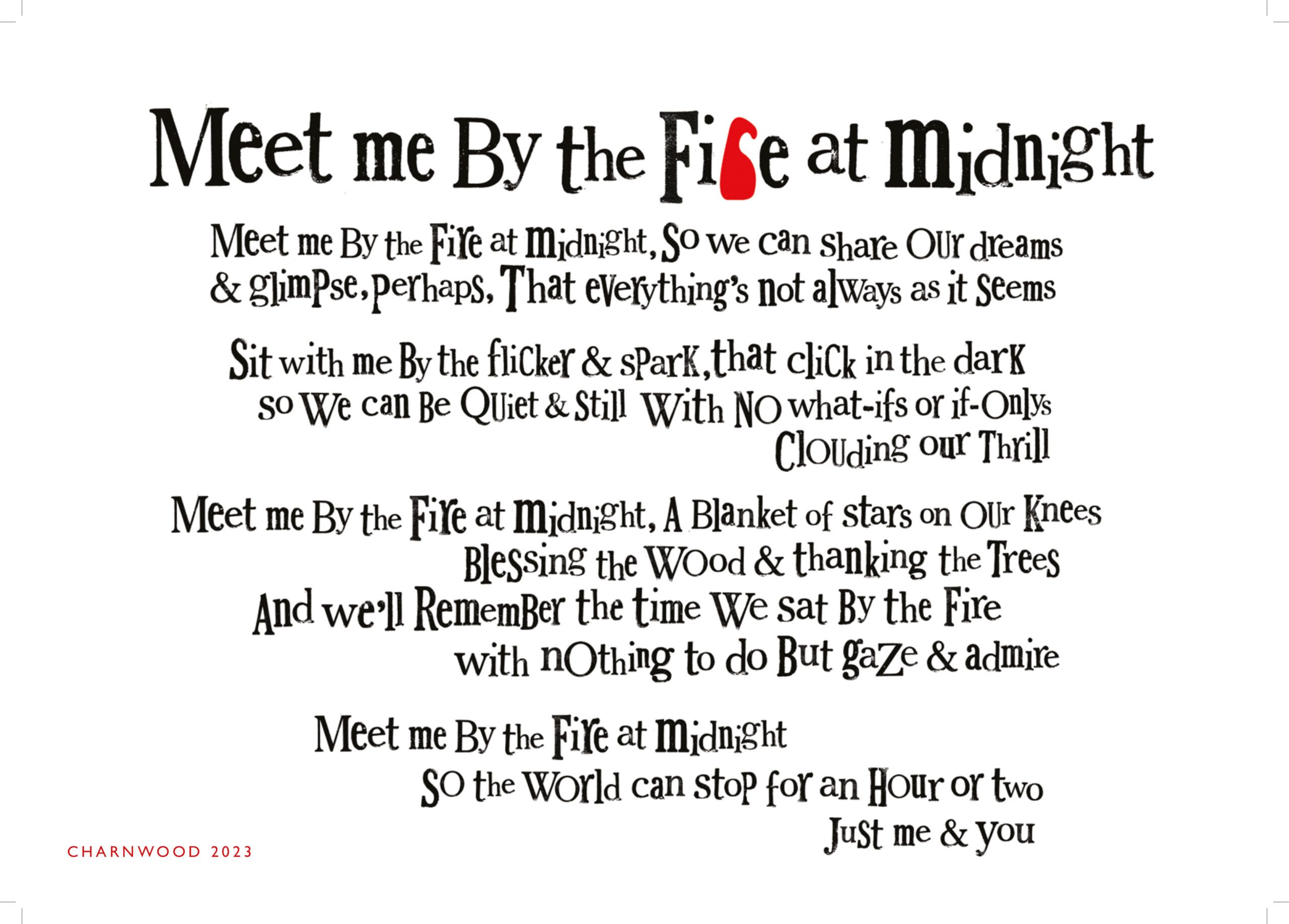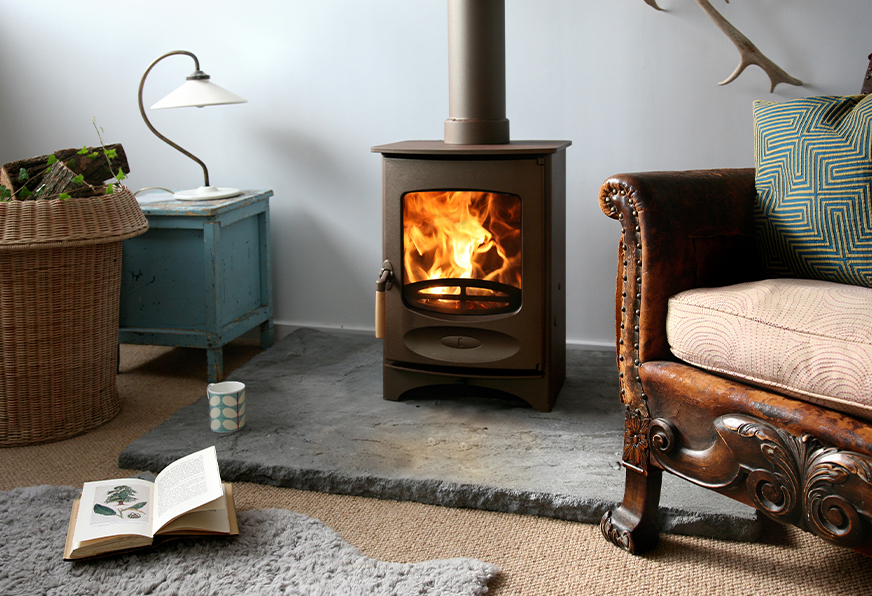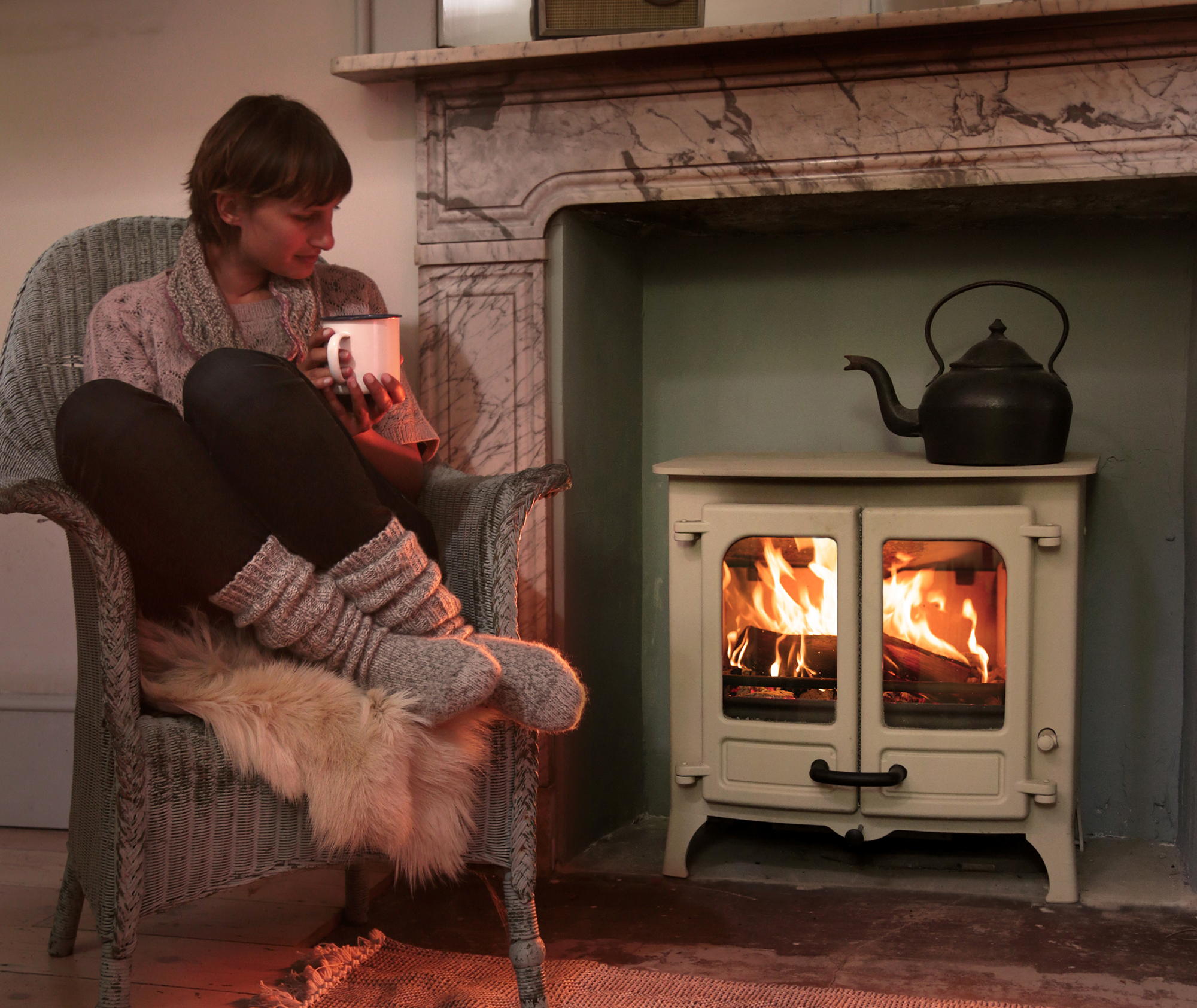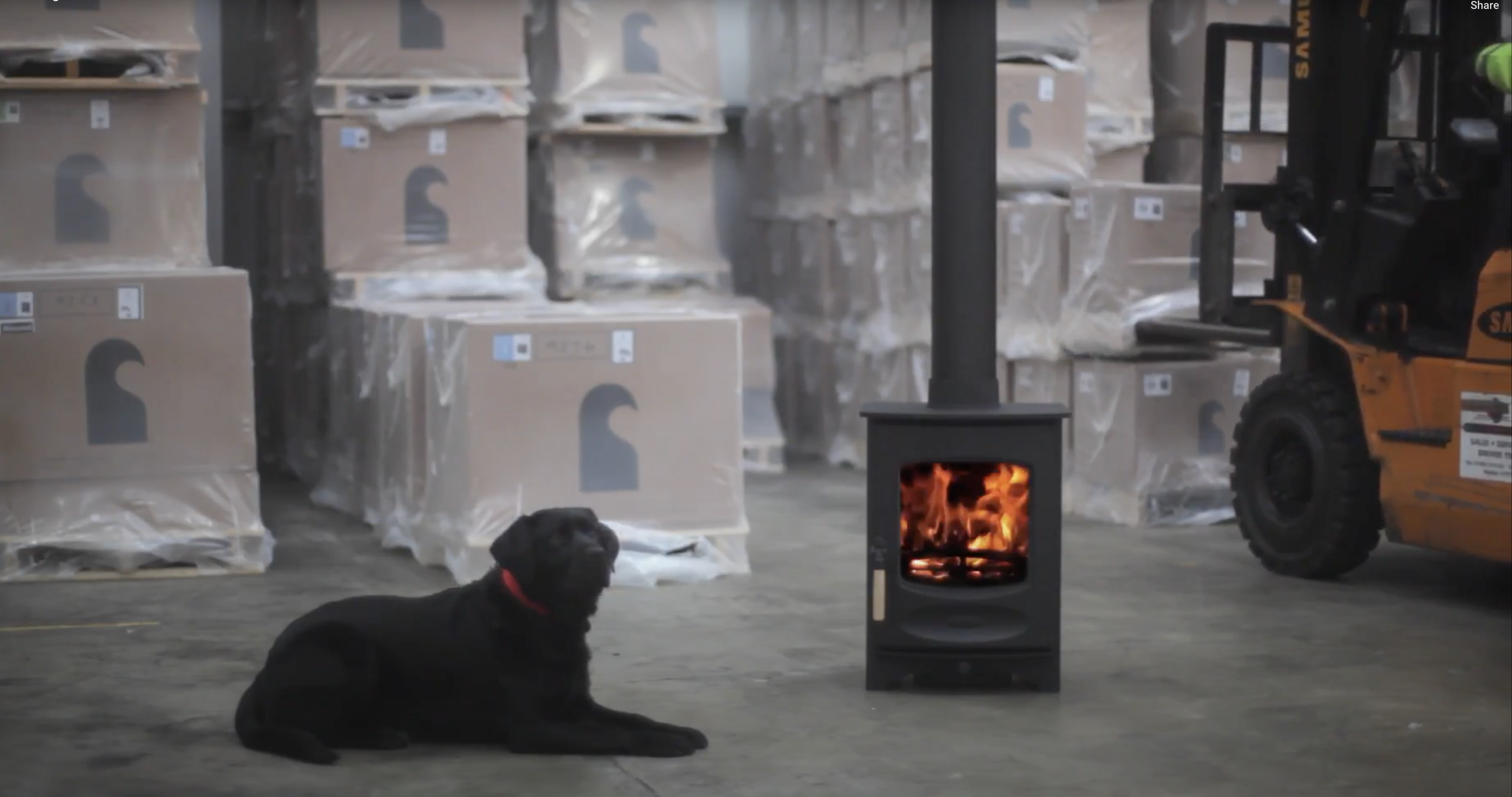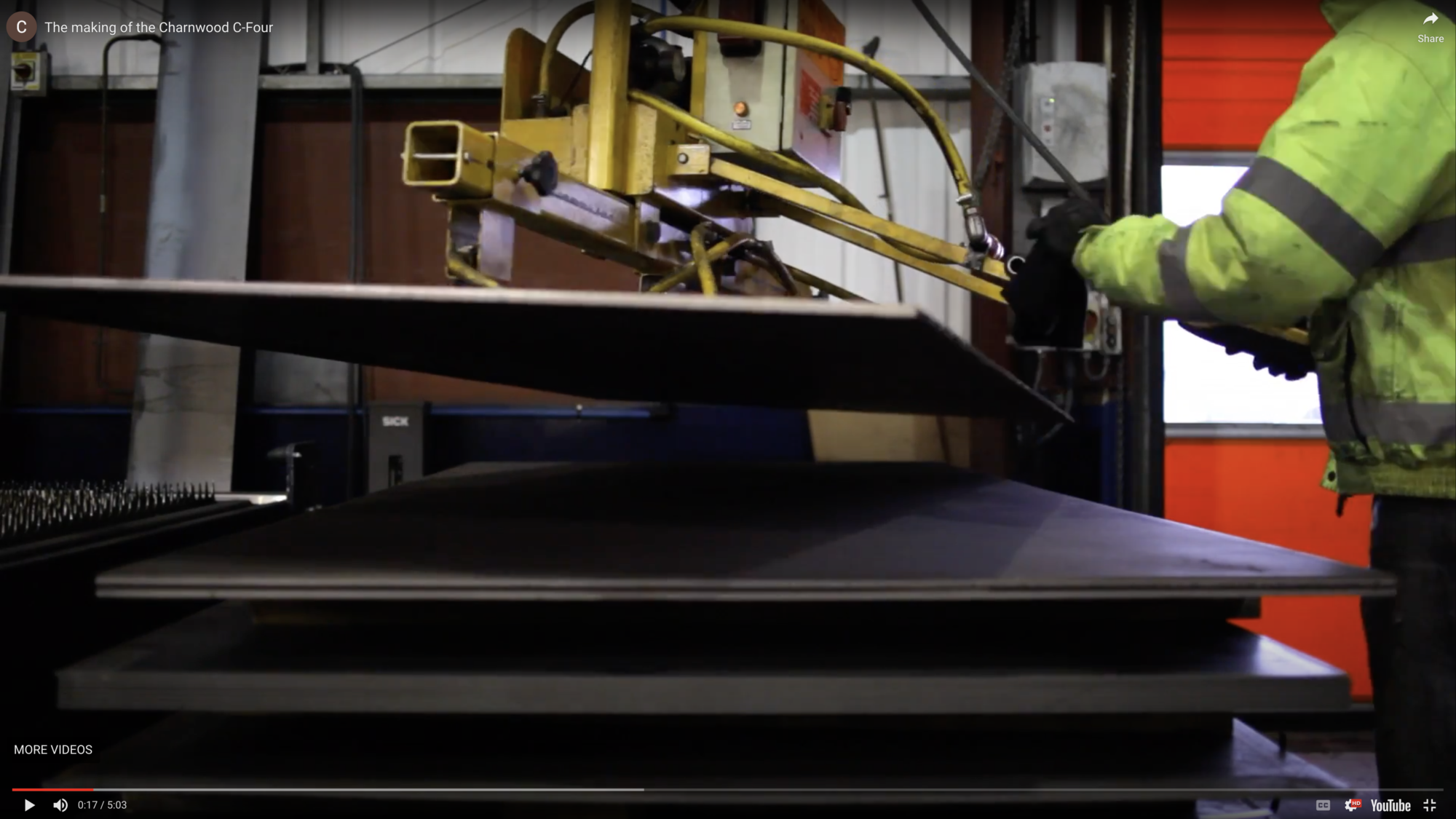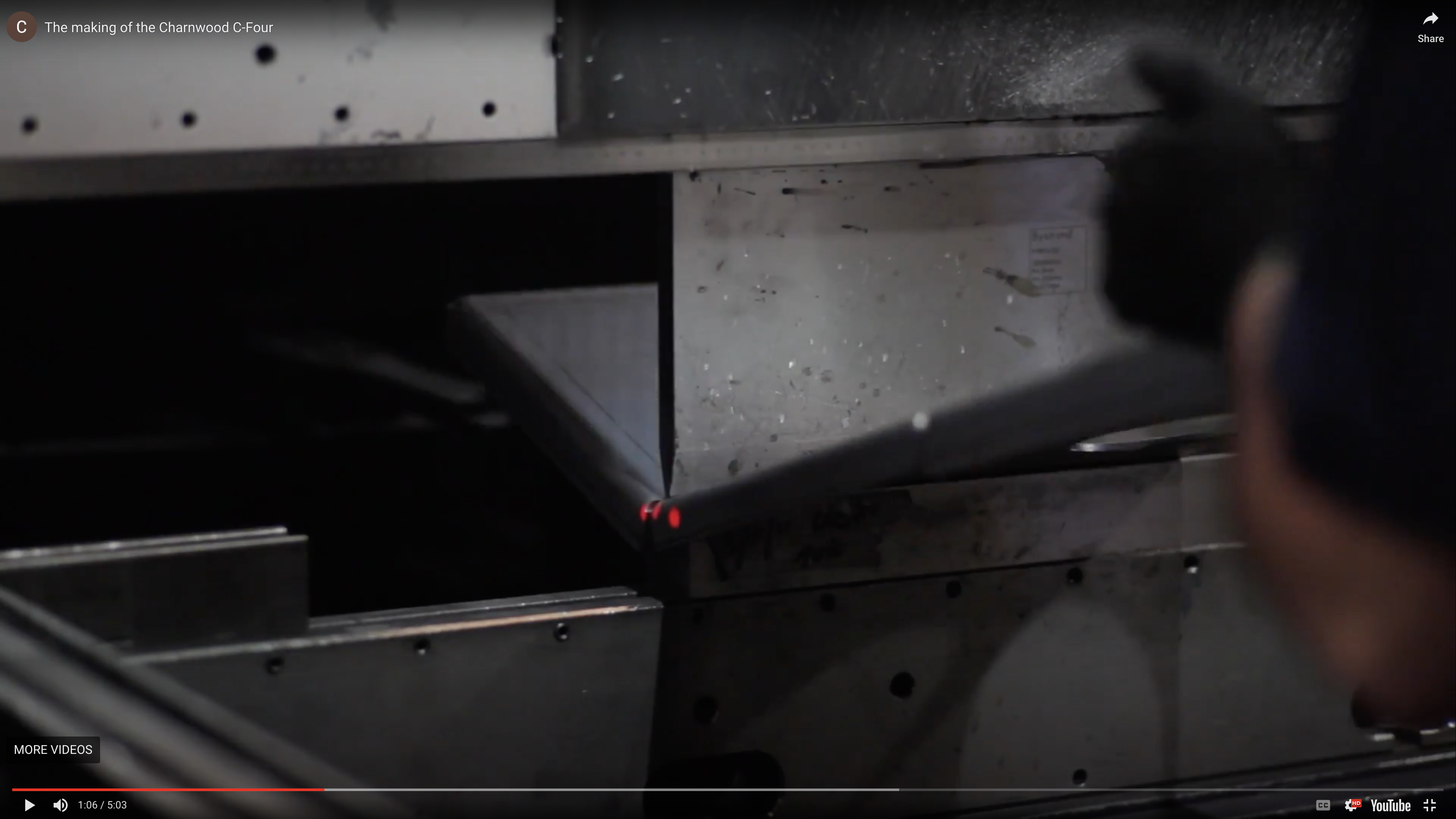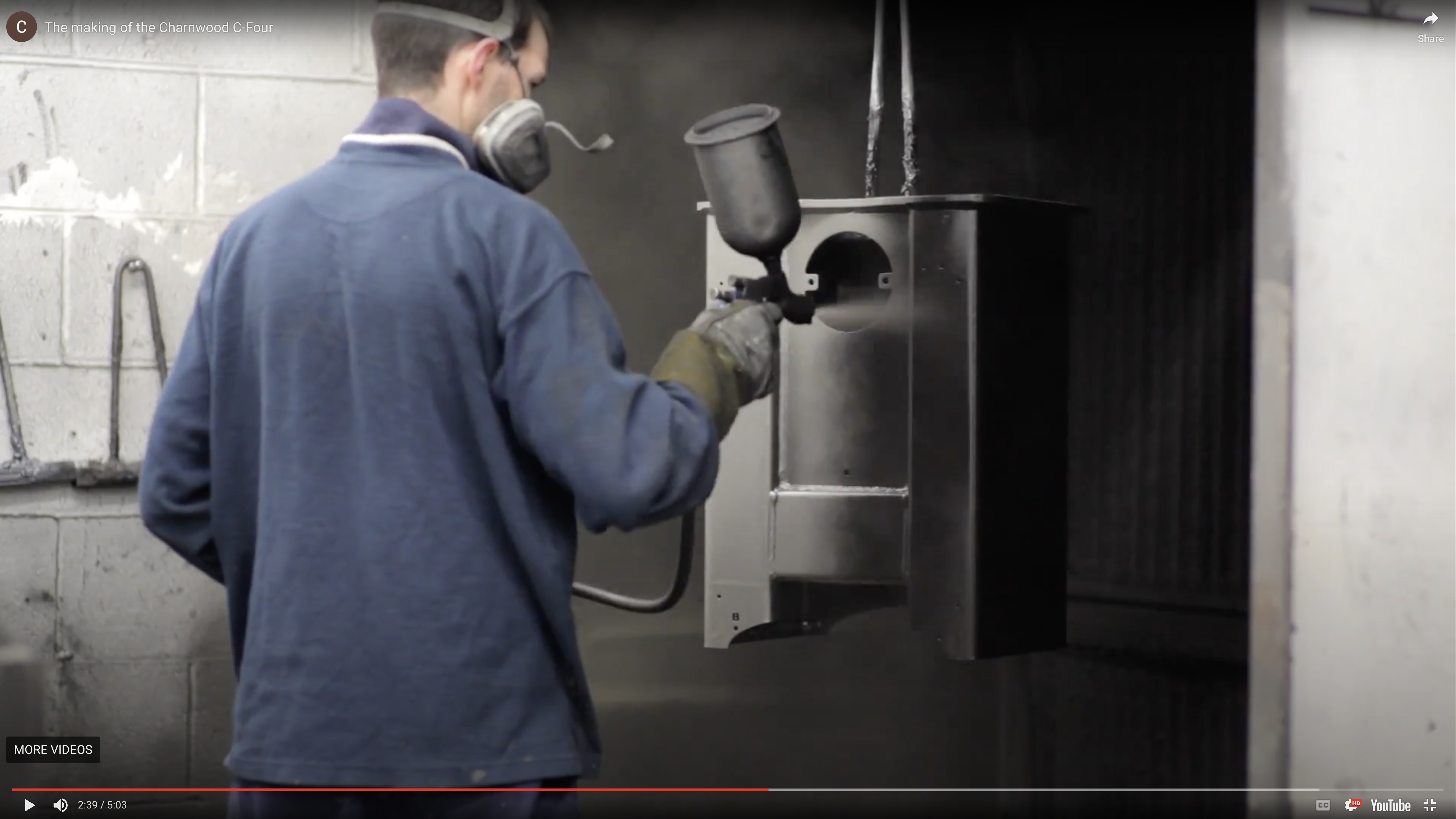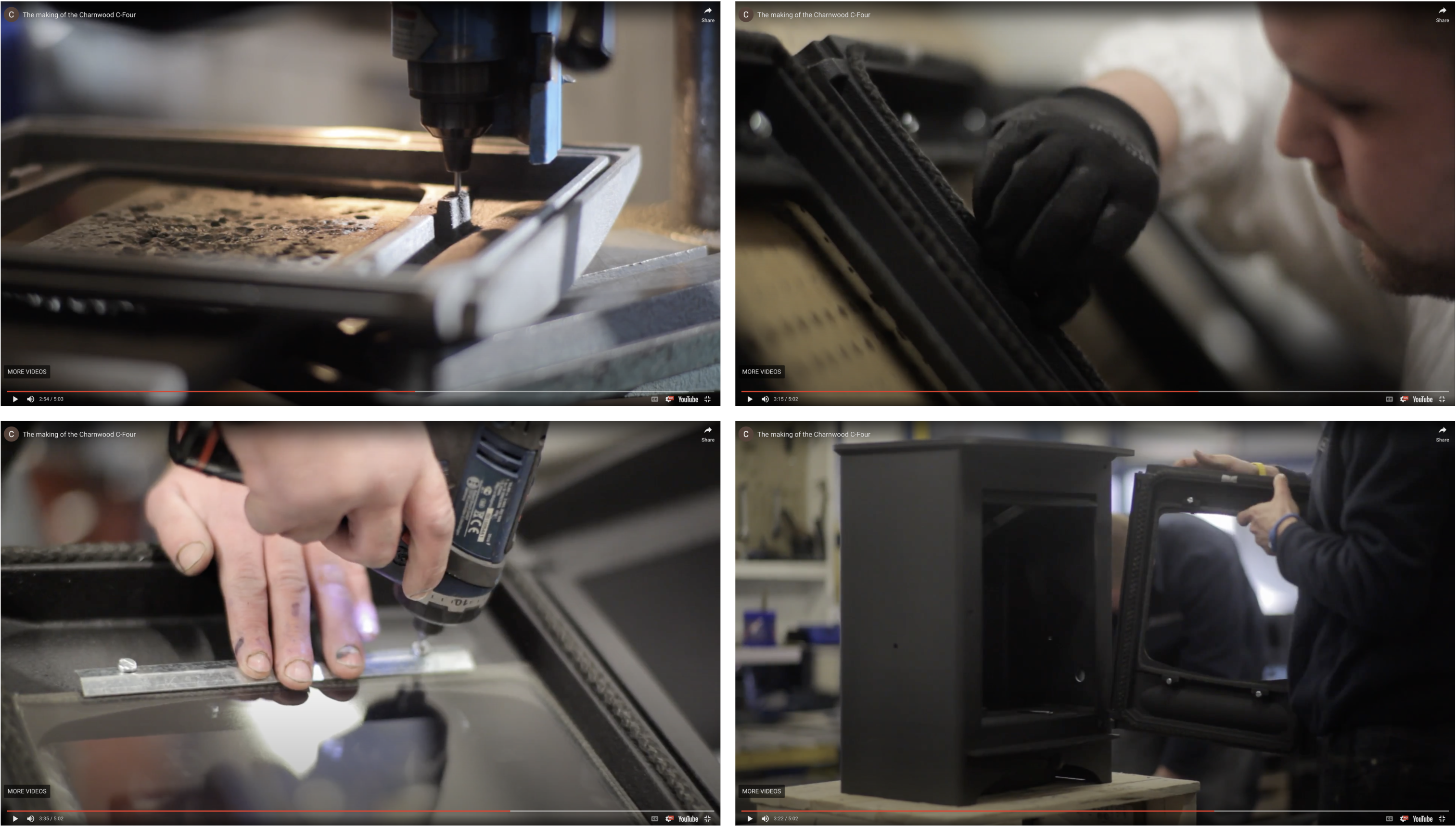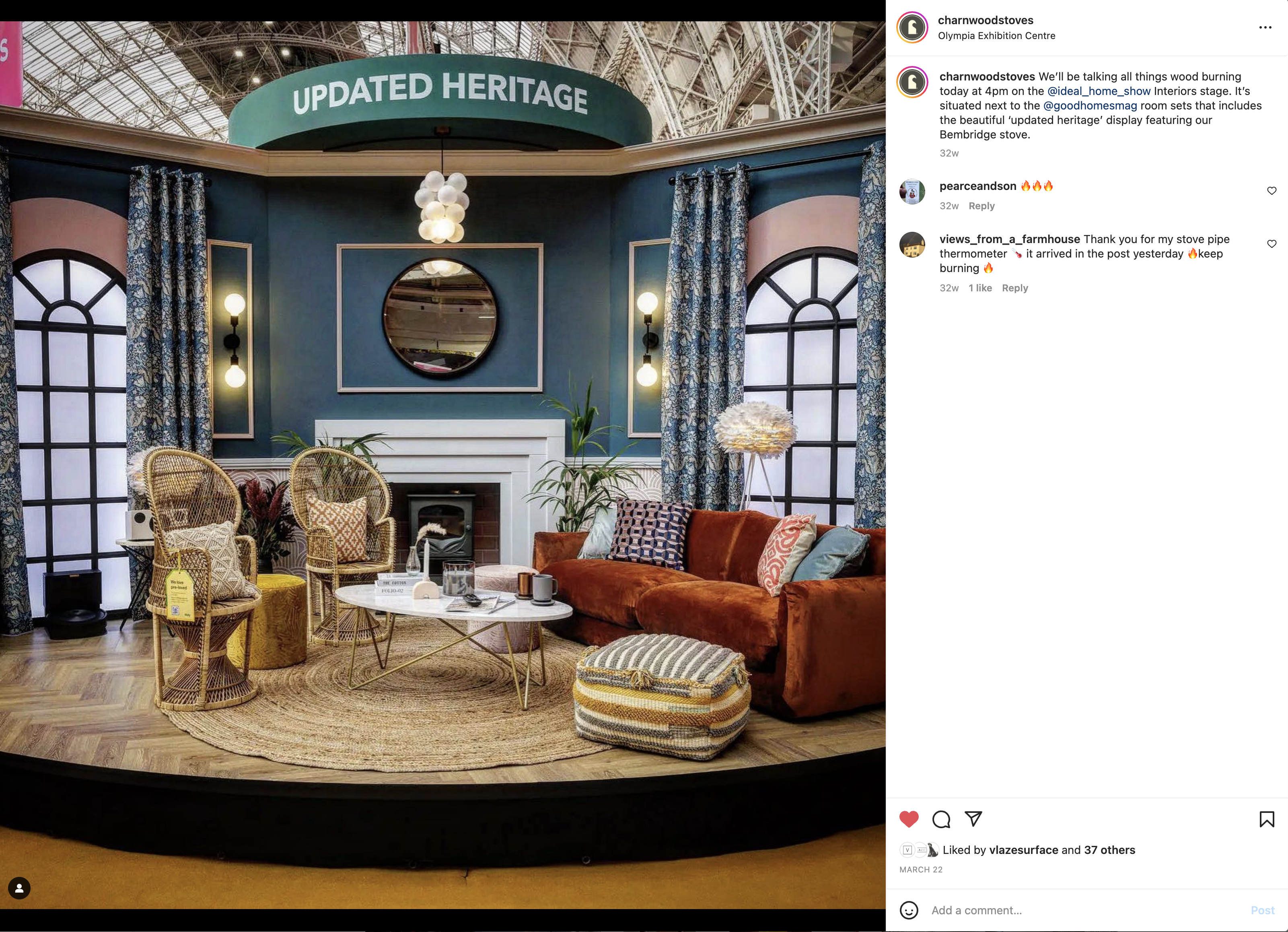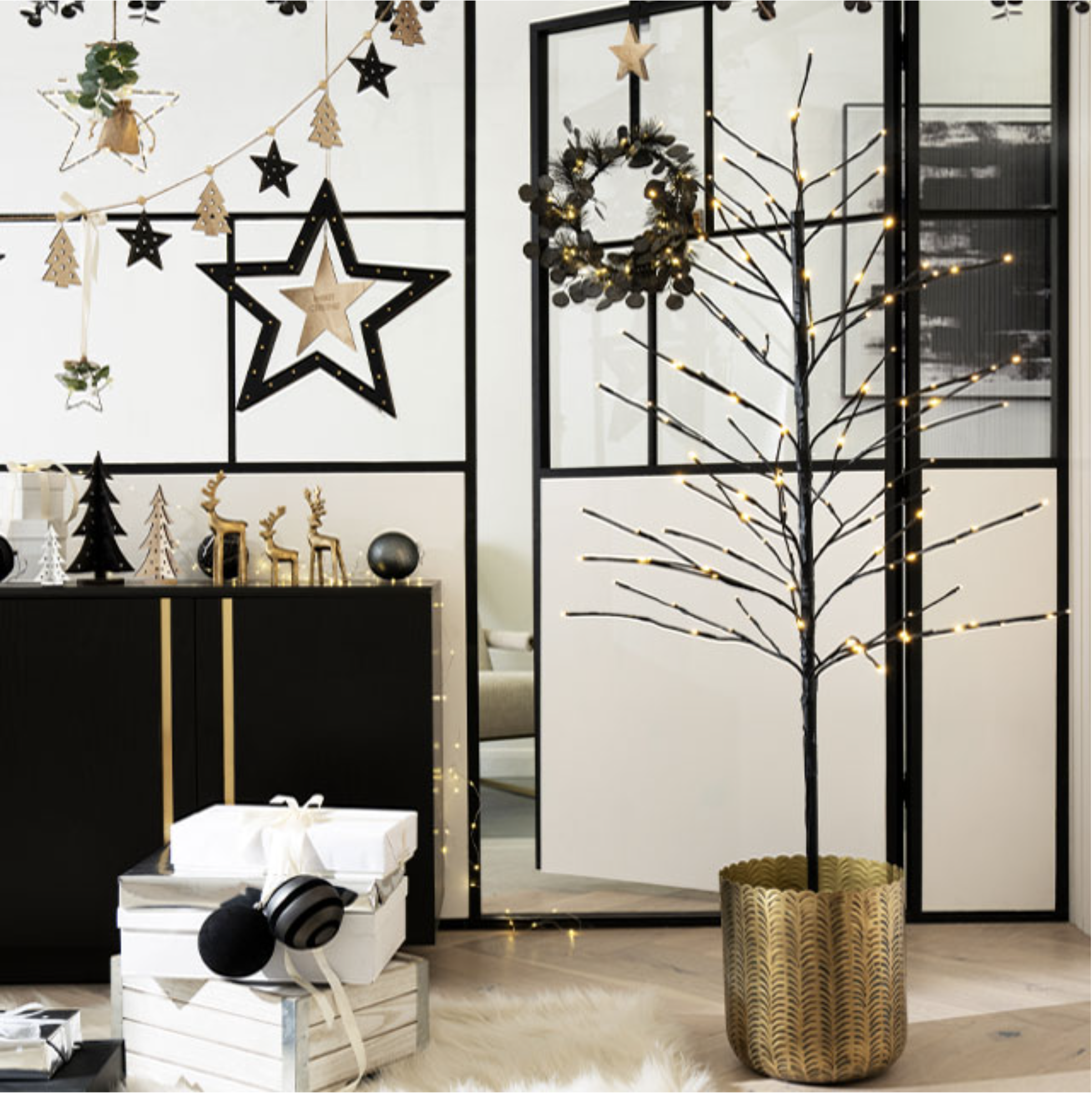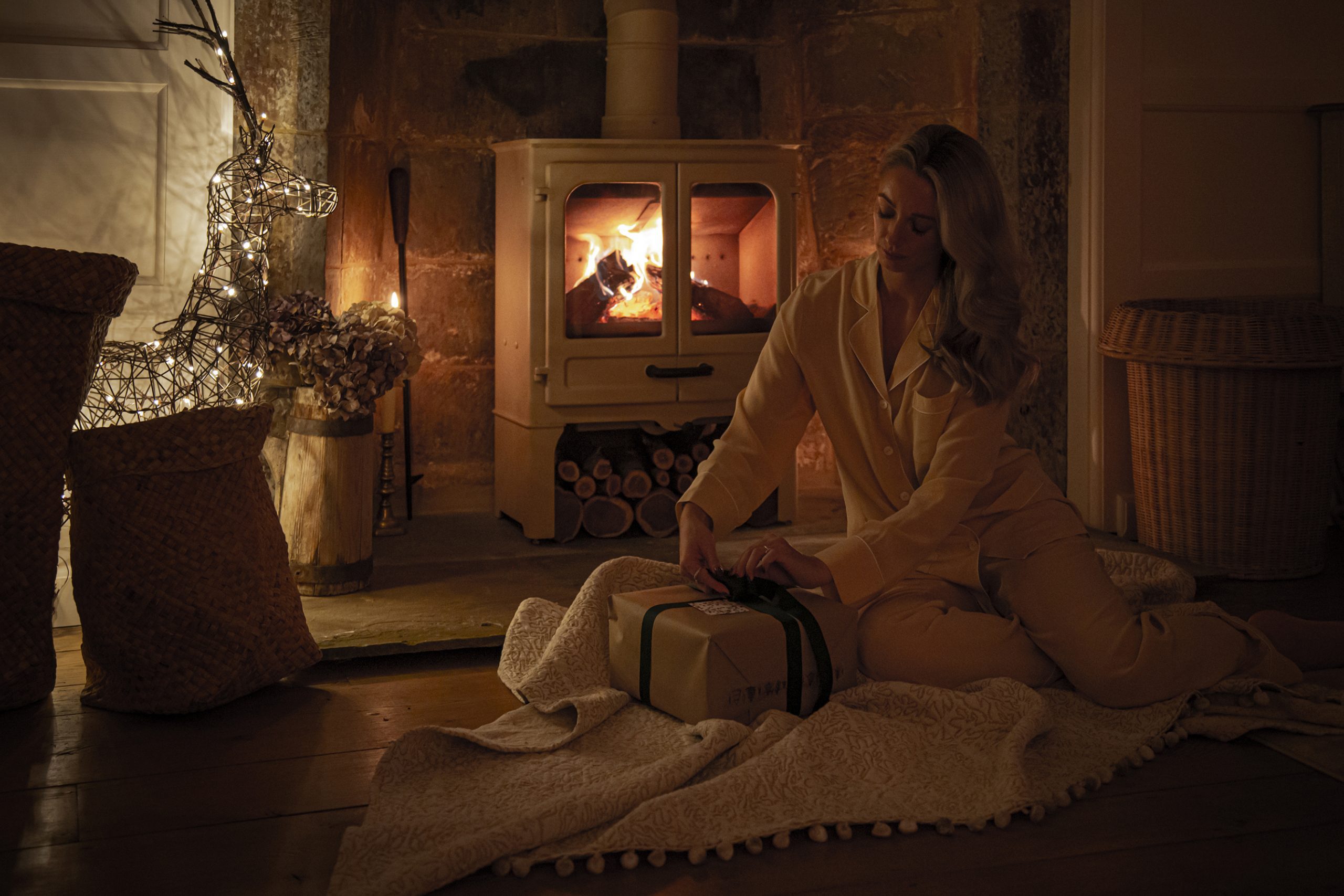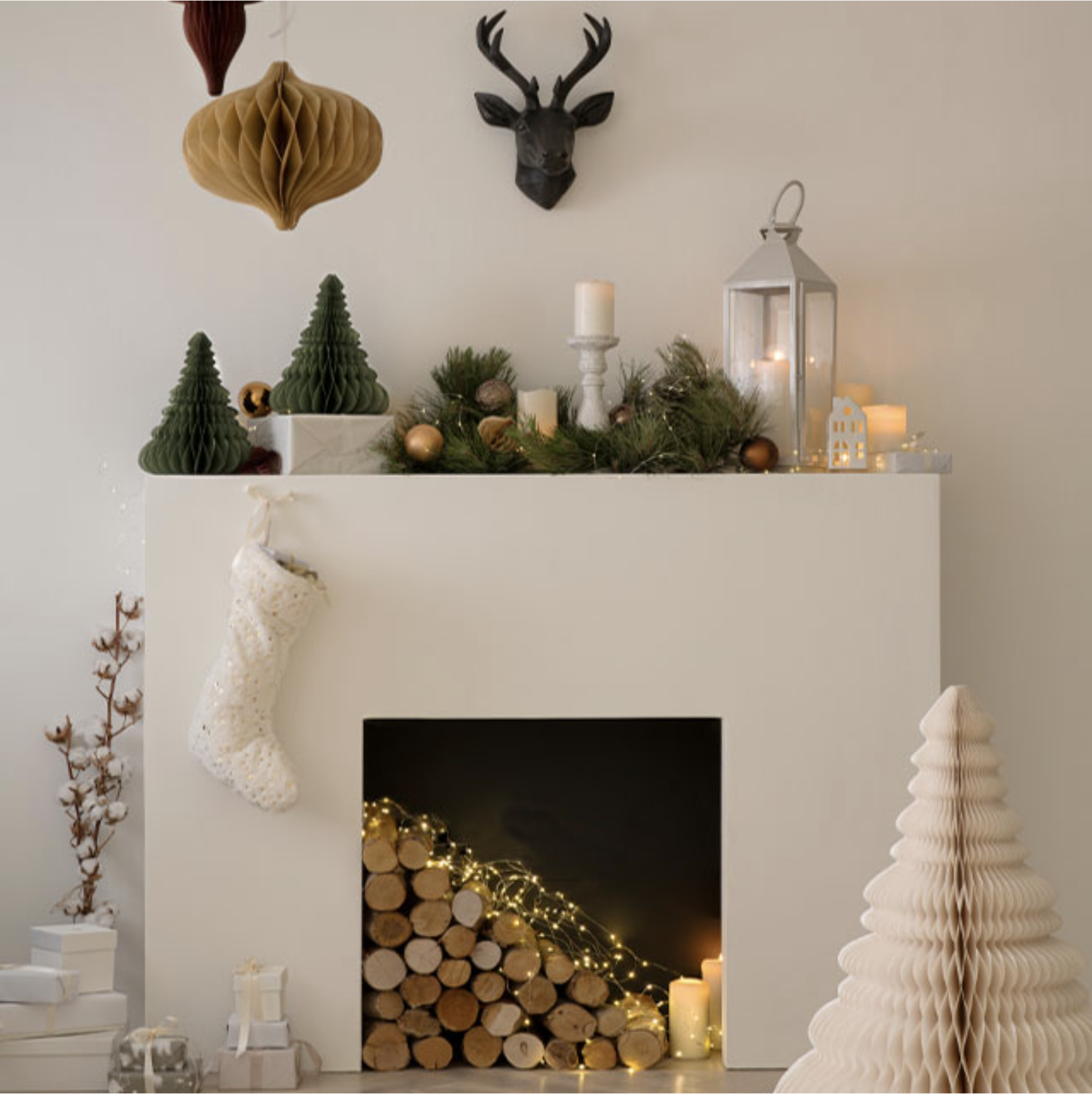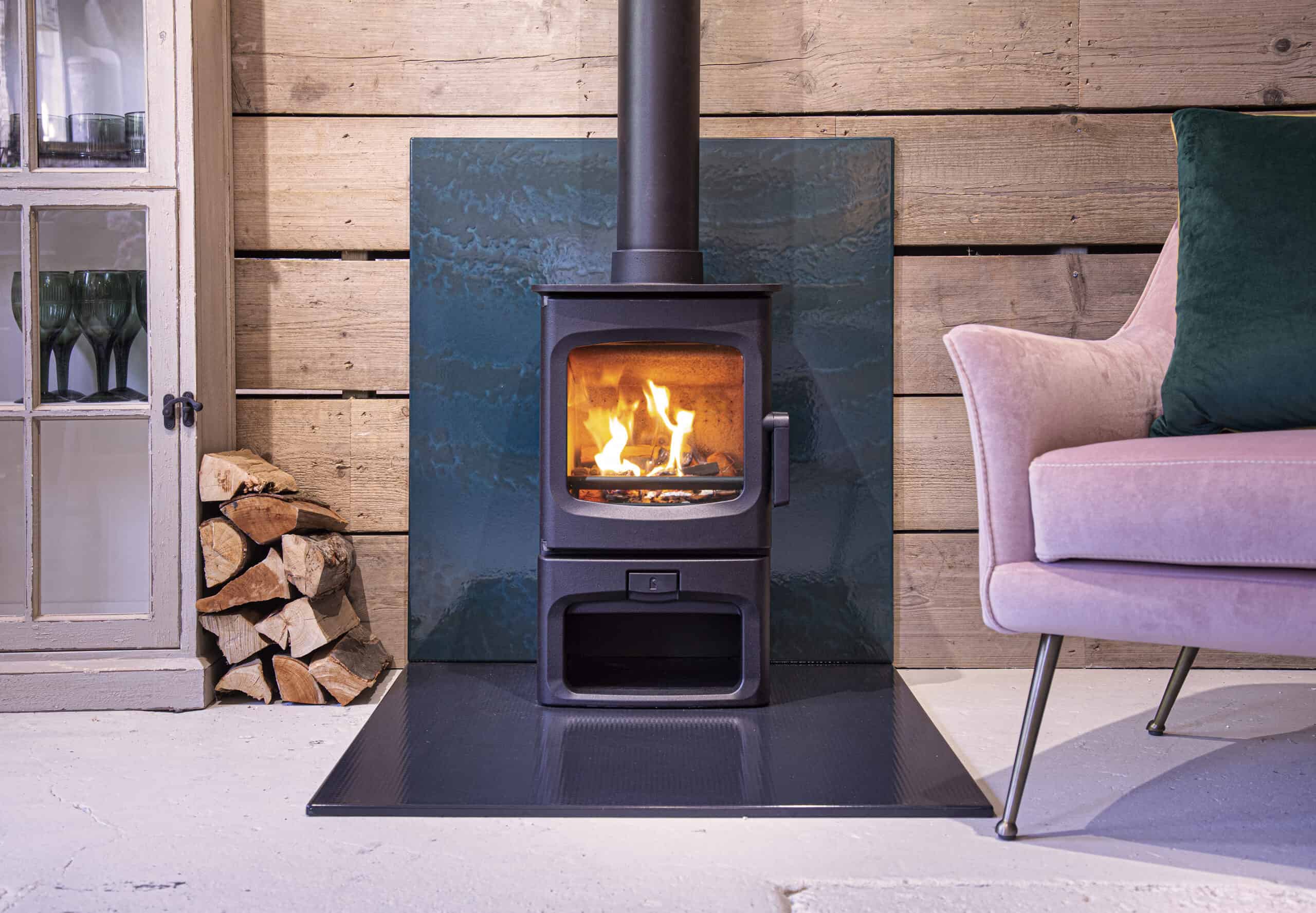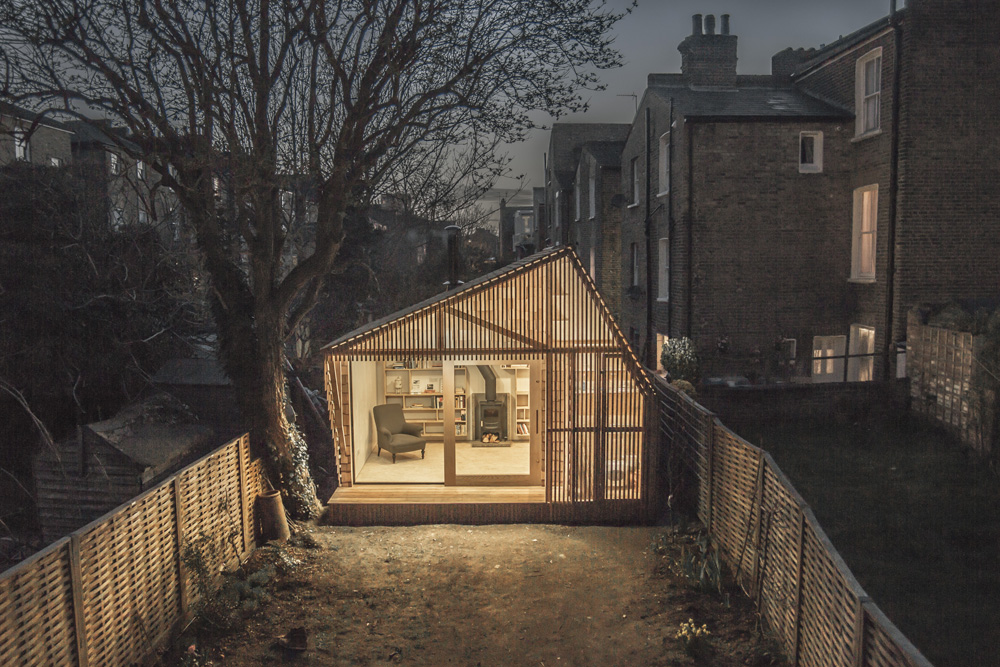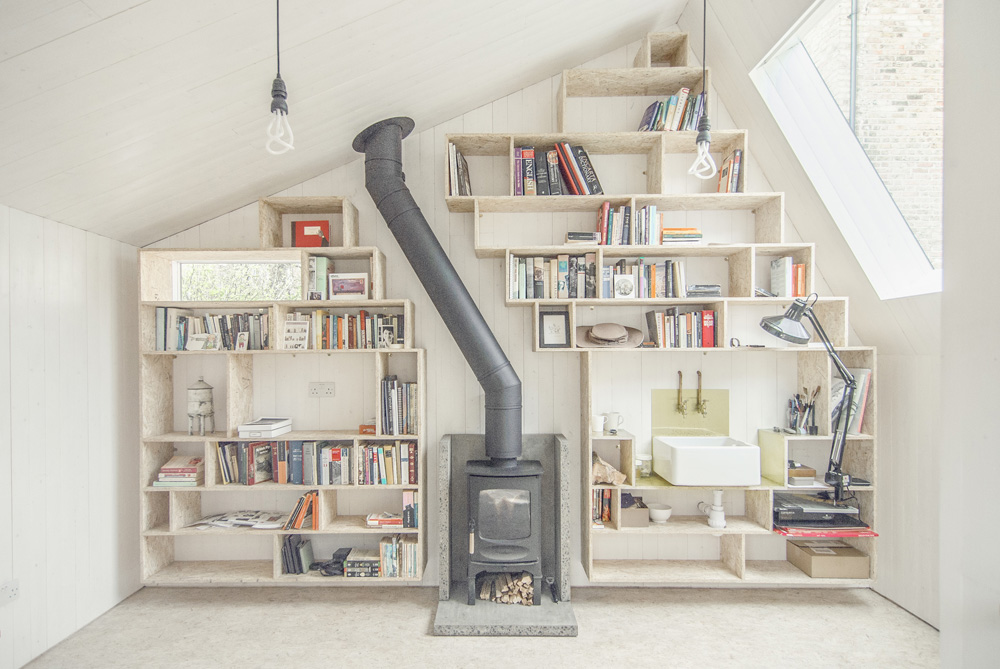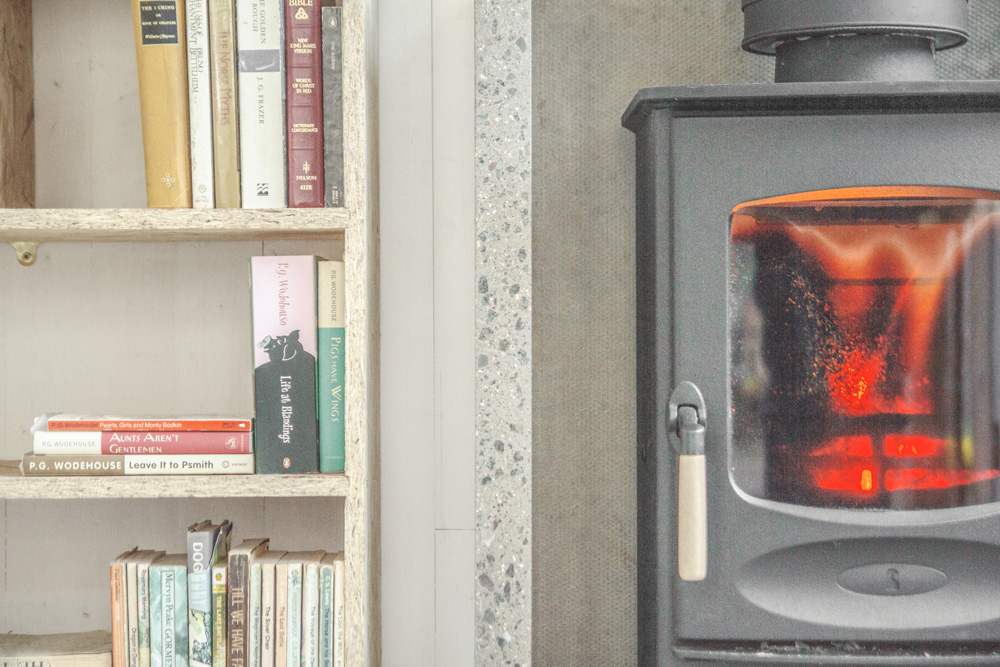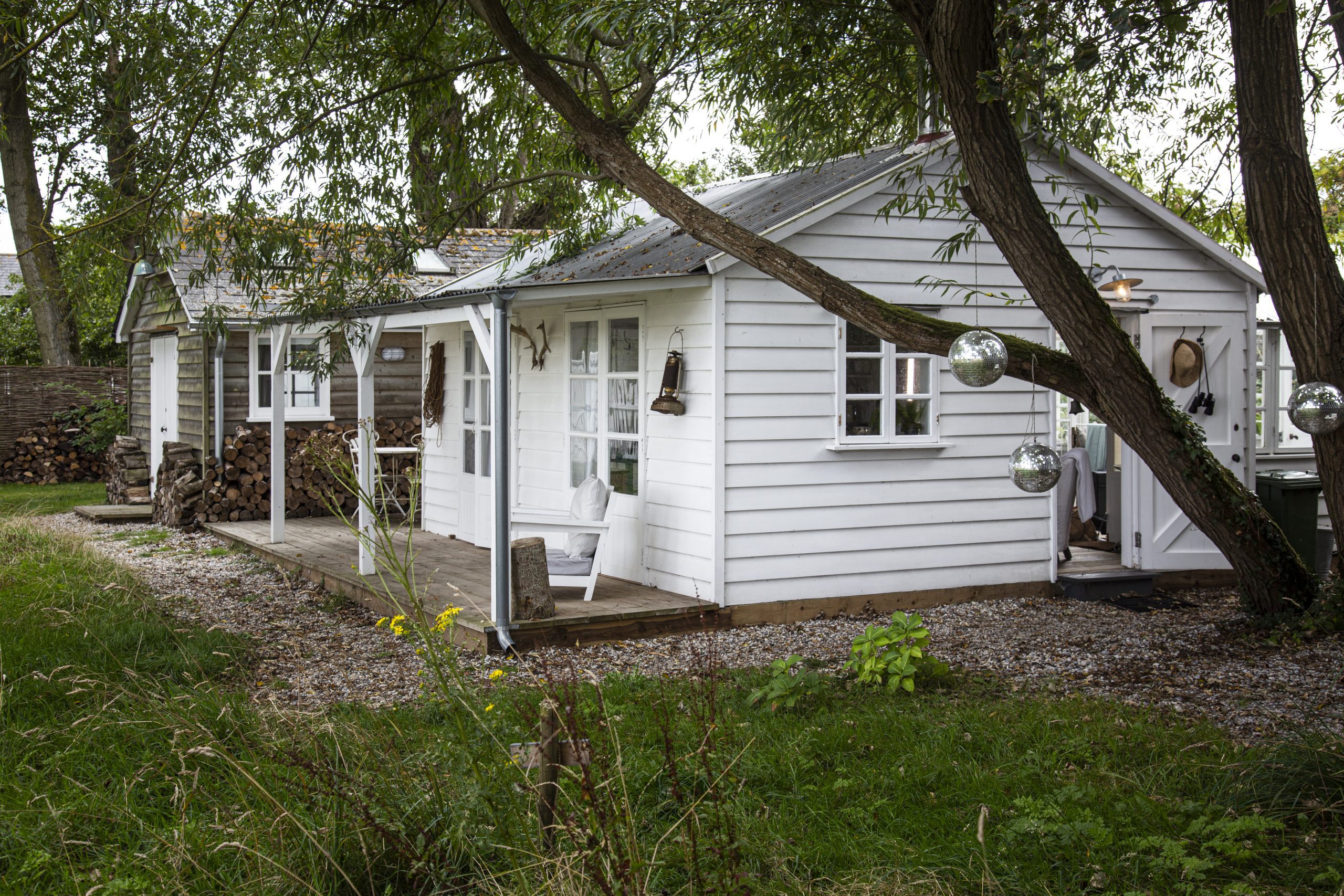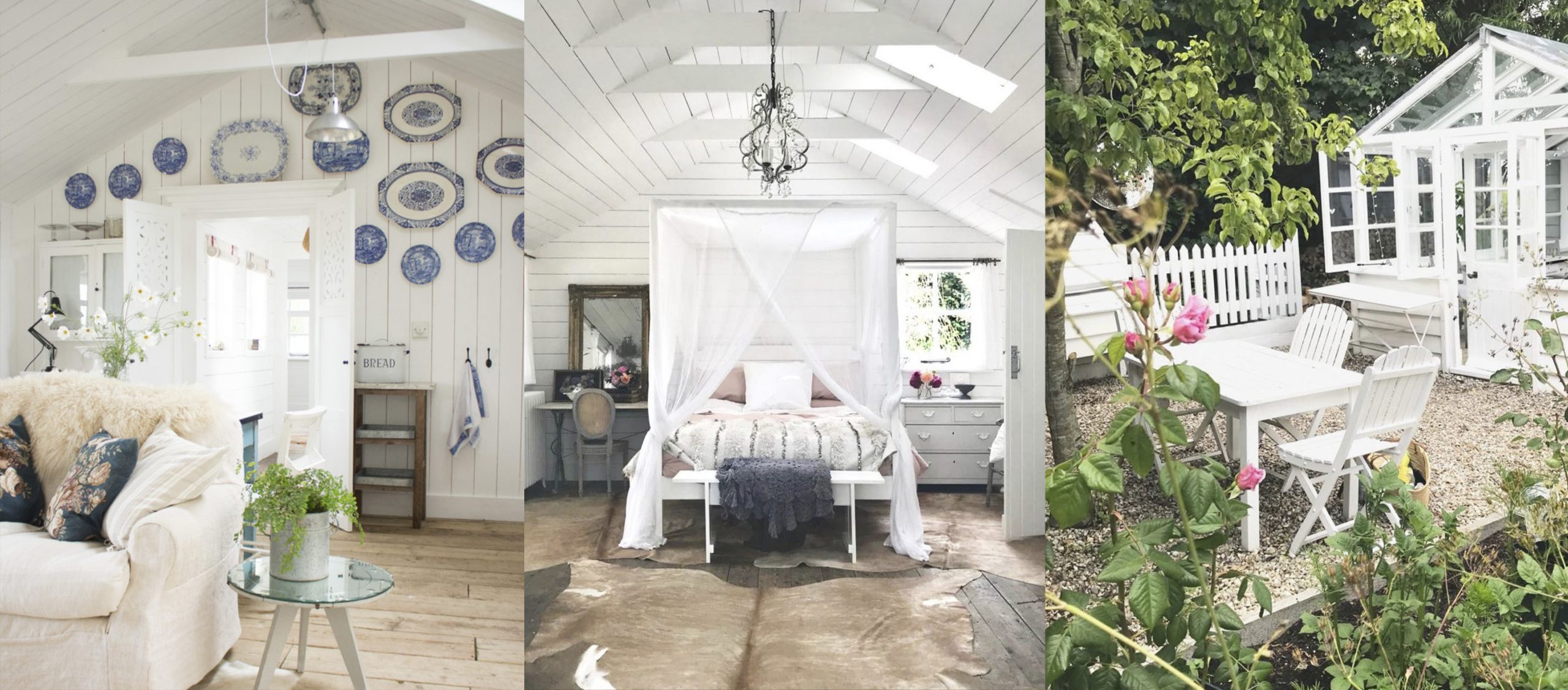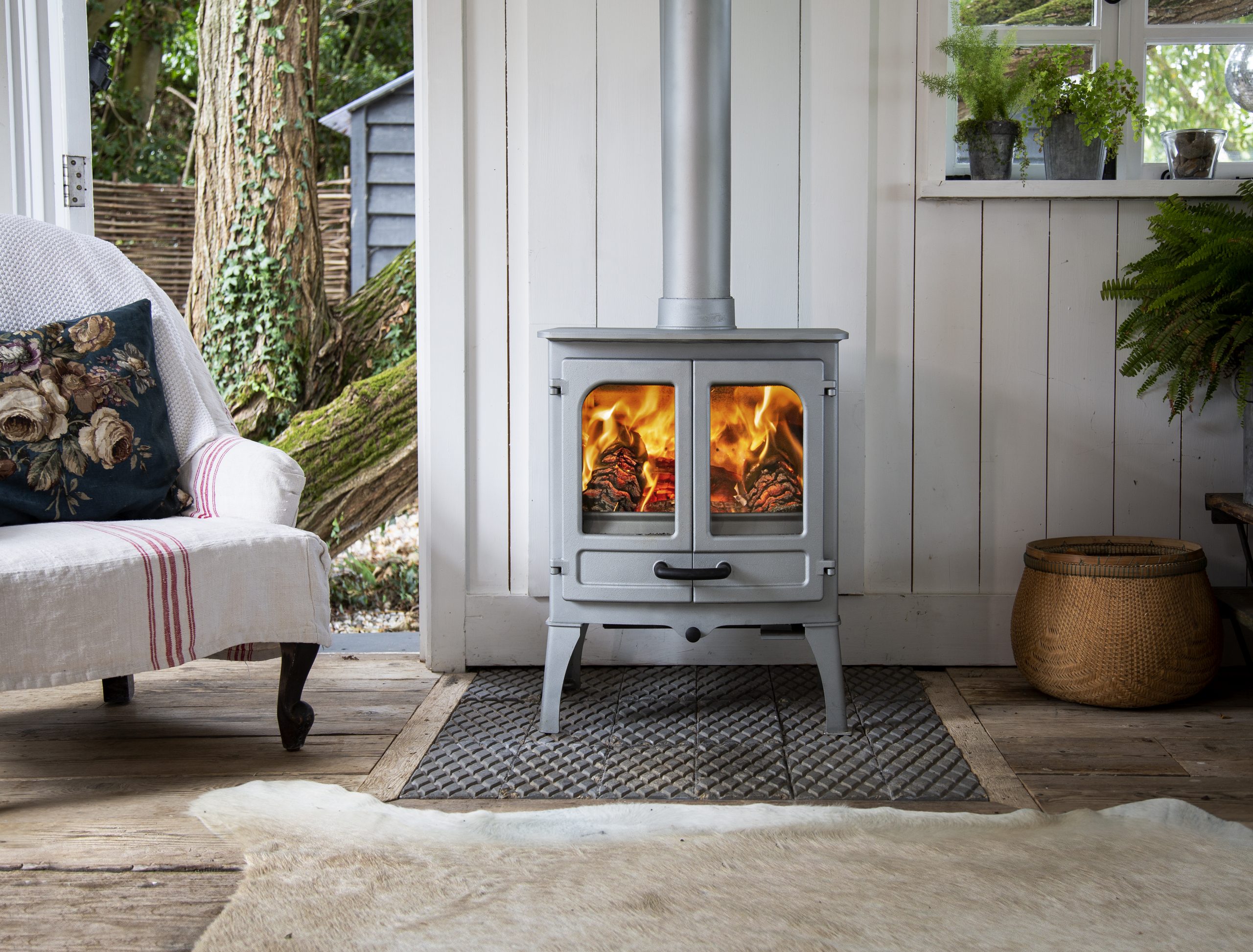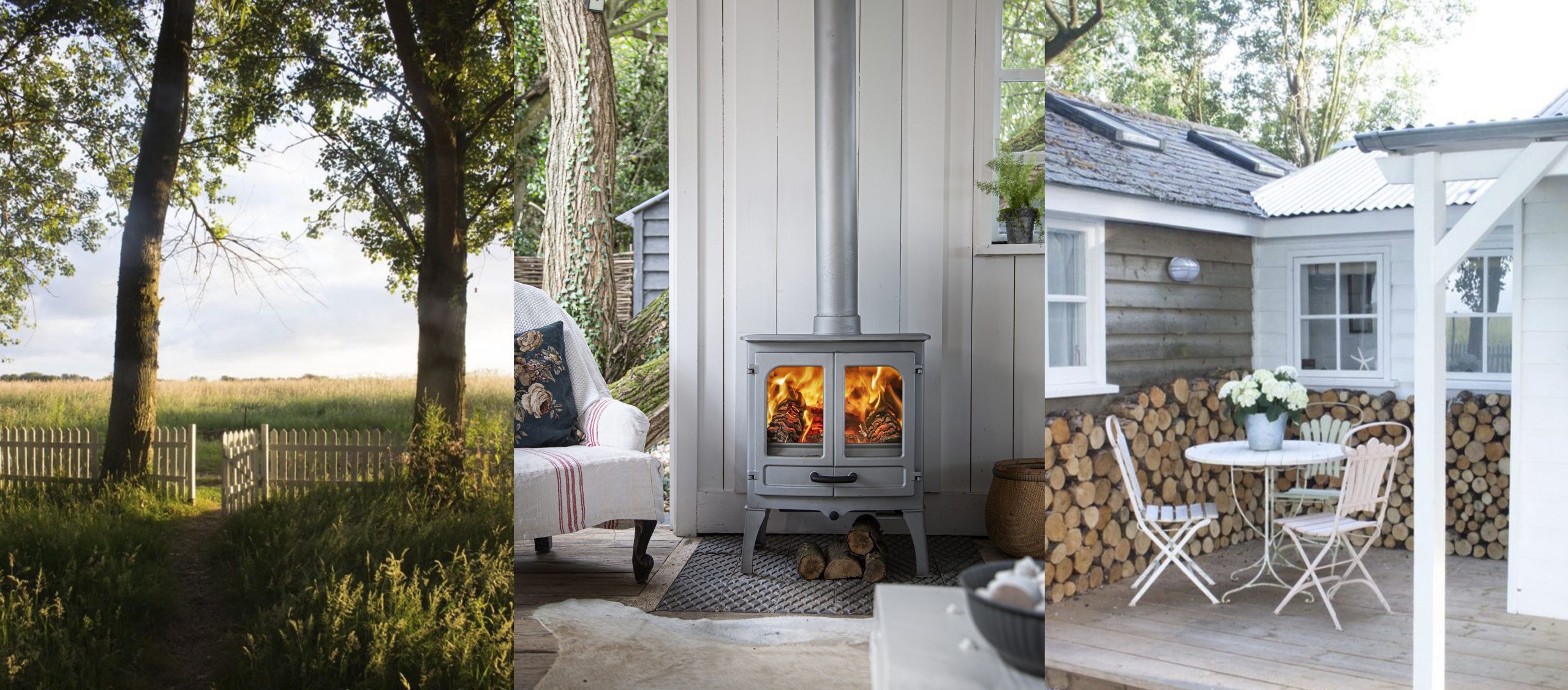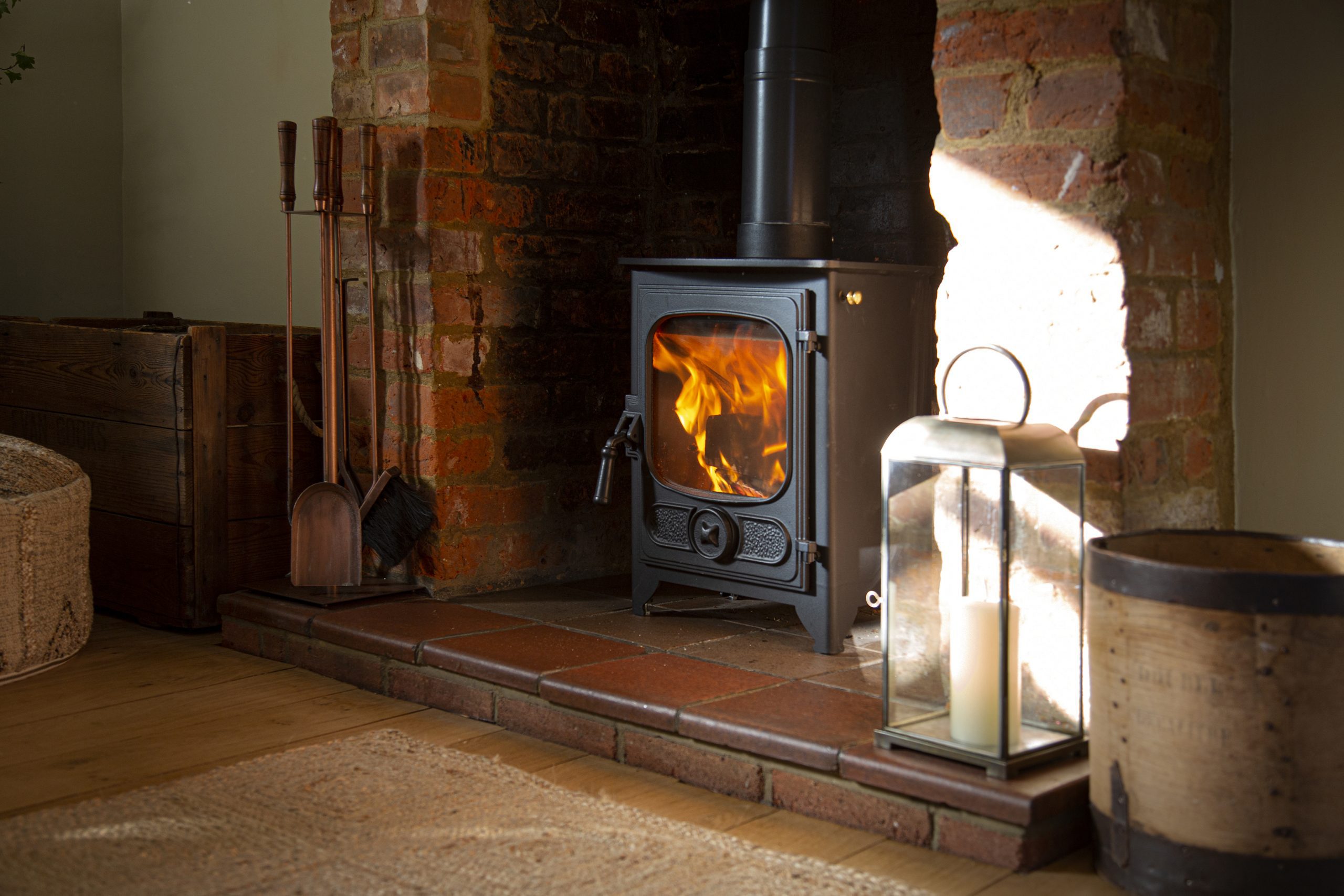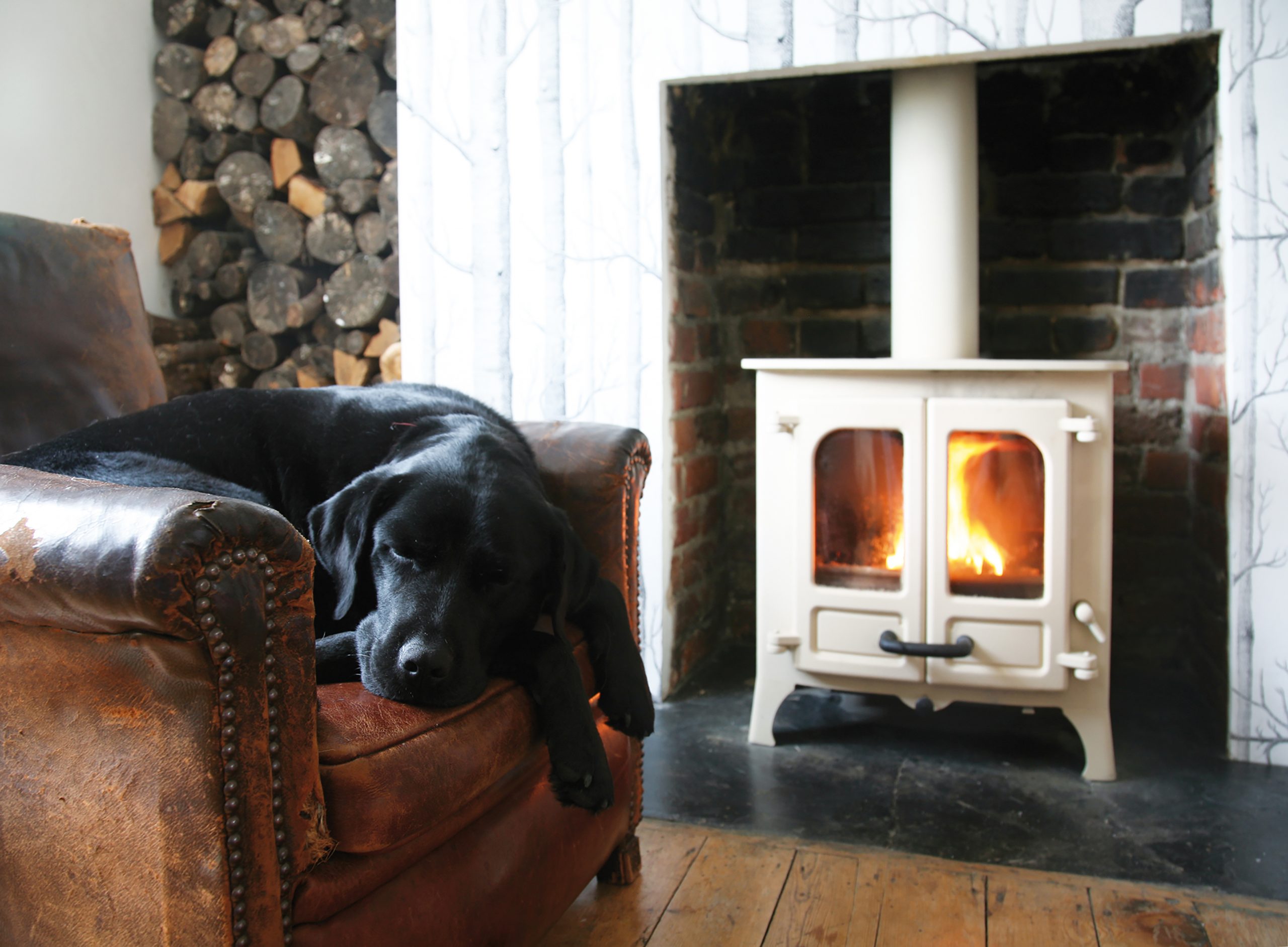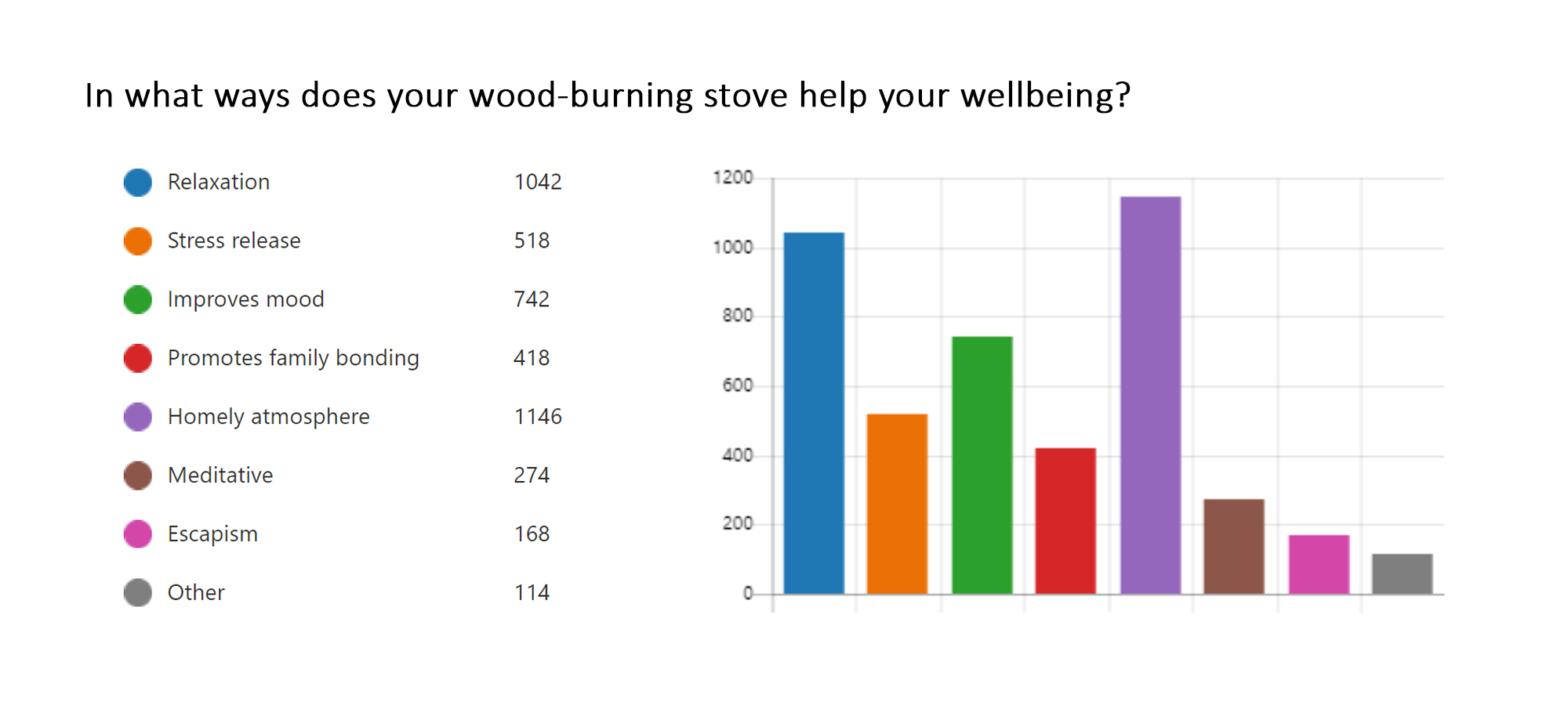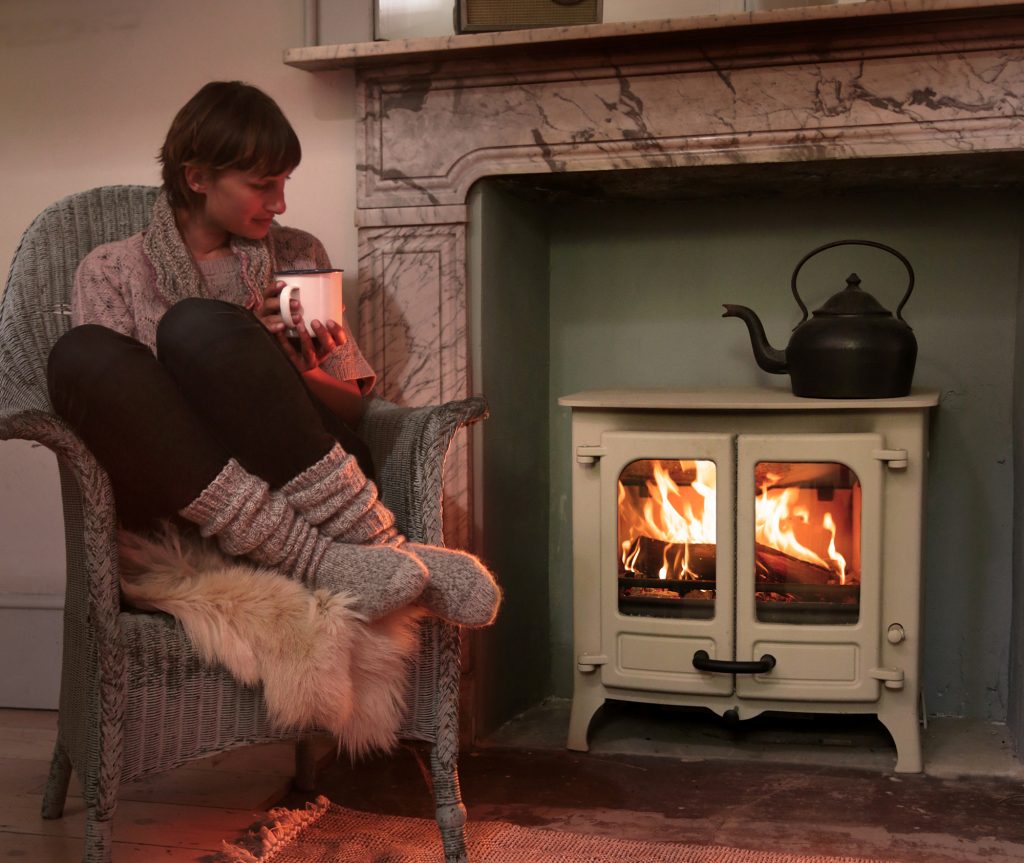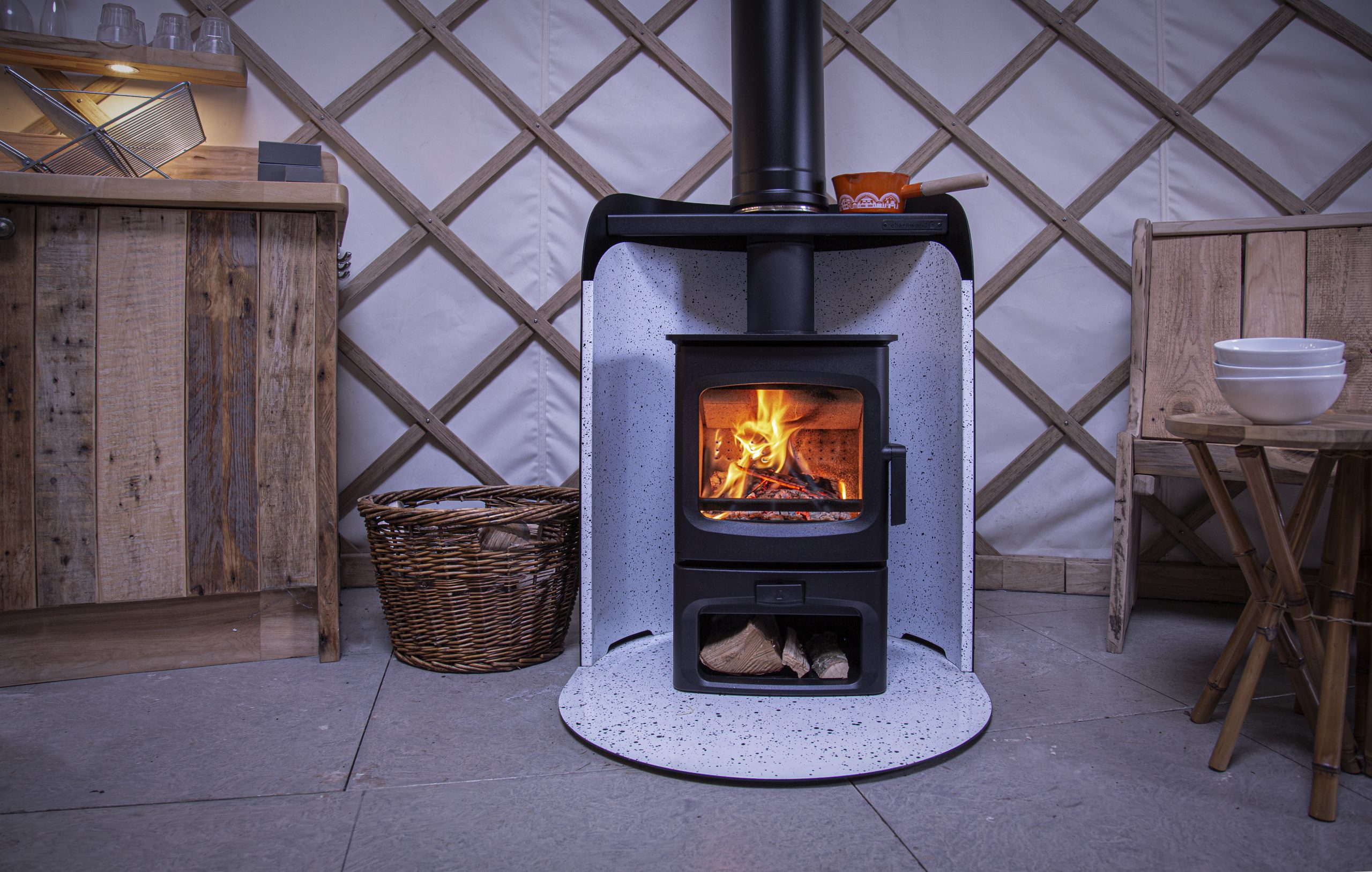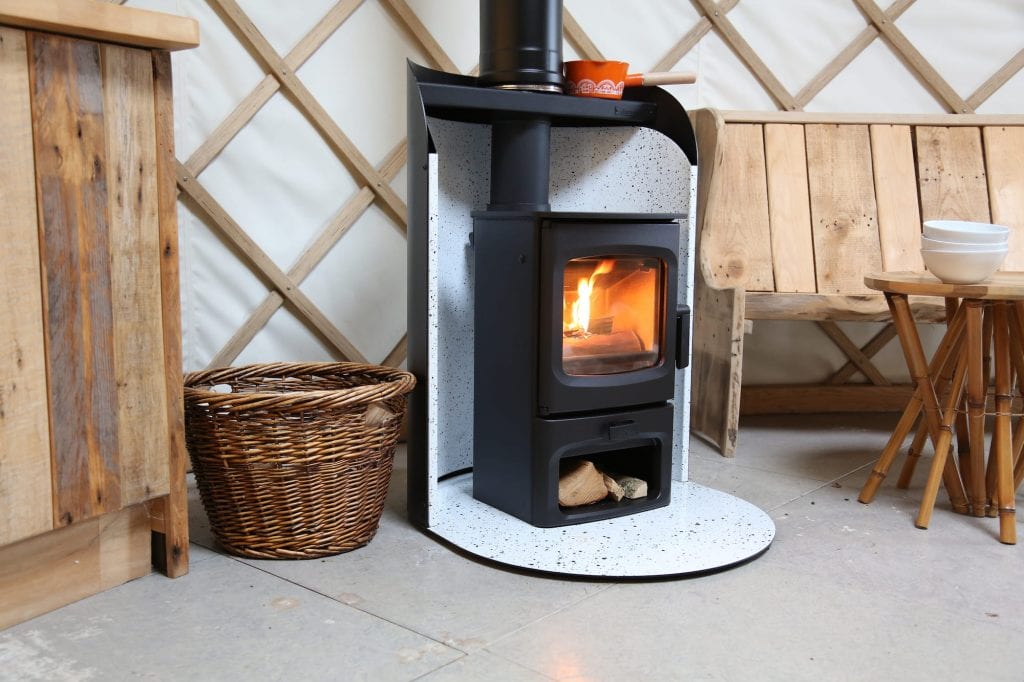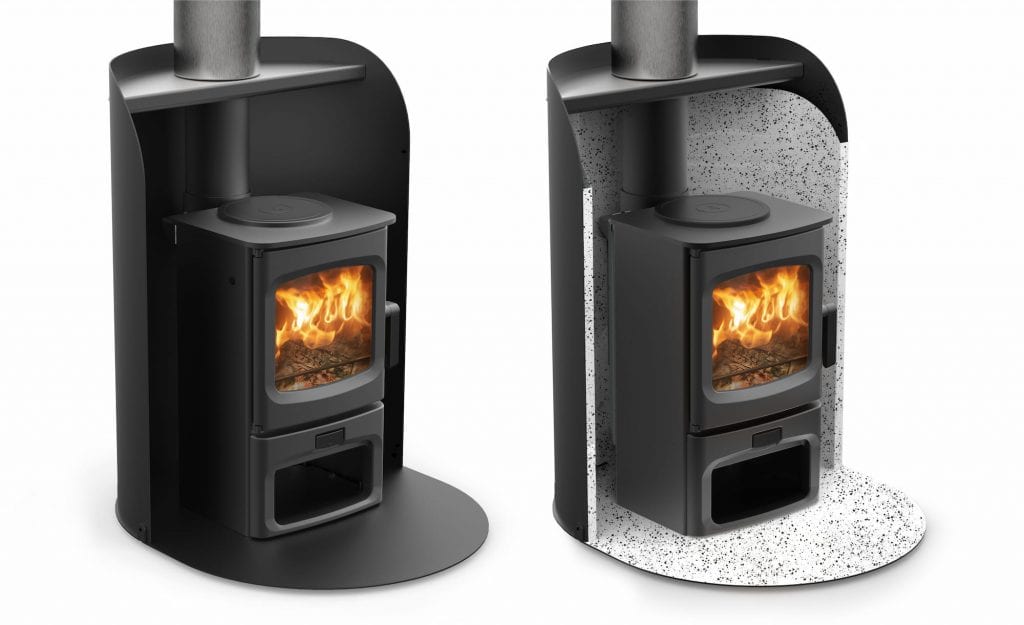We recently released the fascinating results of the Charnwood Wellbeing Study 2021 which revealed 93% of 1227 wood-burning stove users recognise their stove’s positive impact on wellbeing. A further 6% answered maybe with only 1% replying no. The study also gave additional detailed insight into how these wellbeing benefits are experienced and this blog will take a closer look at these findings.
Relaxation
Lighting your stove is the perfect way to draw a line in the sand from the stresses of the day. It can become almost a ritual that readies the body and mind for repose. There is documentation of the power of fire playing this roll since the dawn of time. Studies have shown how hearth and campfires can influence arterial blood pressure and defray the costs of the social brain through fireside relaxation. Here is a section from the study:
‘Results indicated consistent blood pressure decreases in the fire-with-sound condition, particularly with a longer duration of stimulus, and enhancing effects of absorption and prosociality. Findings confirm that hearth and campfires induce relaxation as part of a multisensory, absorptive, and social experience.’
So, in short, science supports what our survey participants reported below.
“I find the process of building and lighting the fire therapeutic and sitting watching the flames is very relaxing.”
A fire promotes feelings of safety and security which helps relaxation. Tension is often held in the body and the warmth of the fire seems to have a physiological effect as well as a psychological one. The heat relaxes the muscles, and the mind follows.
“It helps me to switch off after work and also to consider things more clearly and calmly. It seems to warm my soul as well as my feet!”
“We love our log burner. It makes us feel warm, safe and secure. It helps heat the whole house, which has proved an asset in power cuts. Nothing beats sitting in the living room with the warmth of the fire in the depths of winter.”
“It’s extremely relaxing to sit by the fire and watch the flames dance away. So much so in fact, that we opted to cancel our Netflix subscription and we simply don’t watch it any longer. We’d much rather sit and watch the fire instead!”
Stress release
With stress widely regarded as one of the unhealthiest components of our lives, it is encouraging to know that a fire can change these negative states of being.
“You can just gaze into the fire and be taken away from the stresses of work. It gives opportunity for the family to come together and talk. Talking just seems to come easier when siting around the stove.”
“Chopping wood is a great way to relieve stress! Everyone congregates around the fire and the children like to help with the kindling etc. It just creates a special atmosphere.”
“All my problems seem very manageable when I feel the fires warmth, realising that life is good and that I shouldn’t stress out about the small stuff.”
Improves mood

Mood and happiness are intertwined and while we all have strategies to improve our mood, some are better for us than others. Lighting your stove is arguably one of the better ways to improve your mood and one that can be depended upon time and time again.
“The world seems much better with a stove! It has huge mental health benefit, particularly during pandemic “
Again, whether that is improving from a negative state or enhancing an already wonderful occasion, it appears a significant proportion of participants recognise a strong effect from their wood-burning experience on their mood.
“Really effective on cold winter afternoons with few outdoor options.
Definitely a mood lifter.”
“My stove helps with relaxation & mood improvement. It helps to unwind after a day’s exertions at work.”
Promotes Family Bonding
With more of our lives being played out online, those of us who remember life before social media, recognise the negative impact on in-person interaction and connection. One can be in the same house, room or even at the same dinner table as others and still feel detached from the person gazing at their phone. As an antidote, a wood-burning stove can provide a focal point for the home, encouraging people to share space and spark conversation. Time shared in this way often leads to a deeper sense of connection and a tighter family unit.
“You can just gaze into the fire and be taken away from the stresses of work. It gives opportunity for the family to come together and talk. Talking just seems to come easier when siting around the stove.”
“Something the whole family enjoy doing together and it makes us all feel incredibly relaxed and happy.”
“After a day of sledging and building snowmen and having snowball fights with the family it was very relaxing and comforting for us all to warm up in front of the fire.”
“Having the fire going brings everyone to the same room. This helps with family bonding and discussions in general. With our digital lives, it is so easy to just stay in your room and get distracted. However, the fire brings us together and we can even share a warm drink together!”
Homely atmosphere
Now this one didn’t surprise us too much, gaining the most votes out of any of the options available. Relating to family bonding, the fireplace has long been the centre of the home and we are hardwired to respond positively to its influence.
“Winter evenings with friends. Whenever we have visitors during the winter, we always make sure the stove is running as this usually ensures nobody will request the television be turned on, leading to an altogether much nicer atmosphere with people actually chatting and engaging much more, rather than staring at the screen.”
“Chopping wood is a great way to relieve stress! Everyone congregates around the fire and the children like to help with the kindling etc. It just creates a special atmosphere.”
“Christmas especially. The stove just provides a much-needed atmosphere on a cold winter’s night. You feel relaxed, cosy and there is something about it that just welcomes you into the living room. I couldn’t live without it.”
Meditative
The recognition of meditation’s utility in our modern lives has grown exponentially over recent years. Online meditation apps, sound meditations as well as more traditional forms have all been widely adopted. Despite these great tools, it can still be very challenging to unlock the benefits of meditation through a strict dedicated practice.
Perhaps equally beneficial and certainly more accessible are those everyday acts/experiences that encourage something approaching a meditative state. Hobbies, music, walks in nature etc. can, from anecdotal evidence, bring about these states to greater or lesser degrees. Wood-burning is also certainly on that list. A full sensory experience that allows the mind to detach from thoughts more easily, replacing with a spaciousness that is restorative. Detaching from thoughts and stilling the mind is so much easier when one has a focus, be it the breath, a mantra, or a fire…
“It draws the family (and pets) into the room, warms the atmosphere and the space and watching the flames is meditative too. “
“You can just gaze into the fire and be taken away from the stresses of work. It gives opportunity for the family to come together and talk. Talking just seems to come easier when siting around the stove.”
“Watching the stove in full display is almost hypnotic and has great relaxing properties. It also has a back to nature feel and without any electrical devices in the room is perfect for de-stressing.”
“Mesmerising flame watching takes us away from our worries and concerns. The room has a focus that isn’t a screen and gives warmth with it.”
Escapism
The process of lighting a fire taps into the more primal part of our brain and somehow allows us to switch off from the everyday stresses and escape from worry. A warm fire signifies access to cooking, warmth, and shelter and when these primary needs are catered for, we instinctively feel better about life.
“Fire is deep within the human psyche and sits in a happy place in our limbic brain. You get lost from the day to day in a fire – it’s a little bit of wilderness in the order of the day to day.”
“I’ve long felt a disconnect between earning money in the corporate world and home life. Here is something with a direct connection – the family stay warm through my simple effort.”
“Helps to switch off from the technology that takes over our everyday lives. You feel a sense of achievement when the first sparks ignite.”
Other
There are too many incredible quotes to list them all. To give a feel for the full range of benefits that a log burner can bring to wellbeing, here’s a list of the most used words and phrases in the ‘Other’ category:
Safety, protection, memories, therapeutic, comforting, unwind, switch off, tradition, better than tv, mesmerising, warmth, warm my soul, nicer atmosphere, joyful experience, encourages chatting, stove is a catalyst, congregates, less vulnerable, natural, sense of achievement, hypnotic, cosy, ritual, magical, toasting marshmallows, contentment, building a memory…
The results of the Charnwood Wellbeing Survey are the first of its kind. Whilst offering many fascinating insights into life with a log burner, as with many things in life, seeing is believing. Perhaps we can modify this expression to ‘experiencing is believing’ as far more than one sense is stimulated when nestling down in front of a toasty fire on a cold winters evening.
Read More:
Wood Burning Stoves – Wellbeing Benefits


